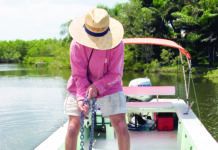Inflatable vs. Hard Dinghy
I have recently bought a nice, old 38′ Shannon ketch, and she has dinghy davits. I have no dinghy, but am shopping around. Im currently tempted by a one-year-old 9′ 6″ Avon inflatable with a six-year-old 4-hp. Suzuki outboard, both in good condition. I will be berthed at Herrington Harbor North in Deale, Maryland. What are the considerations I should give with regard to an inflatable, compared to a dinghy of hard construction? Is this a good question? If so, are there obvious answers?
Dan Oliver
via email
The pros and cons of inflatables are several, as they are with rigid dinghies. Briefly, inflatables are more stable (people can sit on the tubes, and snorkelers can pull themselves up without flipping the dinghy), plane more easily with the right outboard motor, and can be deflated for compact storage when offshore.
On the negative side, the fabric material wont last as long as a good wood or fiberglass dinghy. Readers report that UV attacks PVC more quickly than Hypalon, used by Avon and others, in tropical climates, but both will show signs of wear. (Zodiac, which bought Avon last year and so now builds both PVC and Hypalon boats, disputes allegations that PVC is more susceptible to UV than Hypalon.) Leaks are always a concern. Abrasion to the fabric from pulling the boat up on a beach also will cause wear. And they don’t row well. You depend almost entirely on the outboard for propulsion.
Hard dinghies row much better and are tougher. A good one, well-cared for, will outlast you.
Most wont plane, however, and they may be tippy (no good for swimming off of). For stowage you have to turn it upside-down on deck or carry in davits (acceptable for coastal sailing, but not for offshore). Except on very large boats, stowage difficulties limit the size of a hard dinghy to about 8′ to 10′.
In recent years, inflatable dinghies have become the overwhelming favorite among yachtsmen, for all the reasons cited above. Mostly because they are stable and can go fast.
If we had a big enough boat, wed have an inflatable and a rigid dinghy. We like to snorkel and to row. Its good exercise. An attractive dinghy is a thing of beauty-like your Shannon. One hardly ever says that about an inflatable.
To Freewheel Prop Or Not
Has Practical Sailor ever done any tests, or know of any tests, to determine if a freewheeling prop creates more or less drag than a prop locked to keep it from rotating? Not considering a two-bladed prop hiding behind the keel?
Bob
via email
In 1993 we worked with graduate students and professors at the Massachusetts Institute of Technology to test a number of propellers. One of the tests checked to see if allowing a prop to freewheel created less drag than locking the prop in place. The answer was that substantial savings in drag can be had freewheeling across the whole range of speeds. This test assumed that both props were located in the open behind shaft struts, not in apertures of full keels.
If you have a full keel with prop aperture, it would probably be better to lock the prop vertically behind the deadwood than to let it freewheel. If you can’t do this with the transmission, use a shaft brake…it helps to have convenient access to the shaft.
There are, of course, other considerations involved, such as wear and tear on transmission bearings, noise, etc.




































